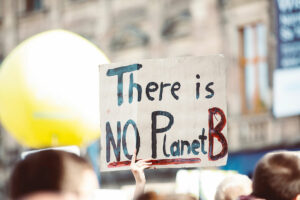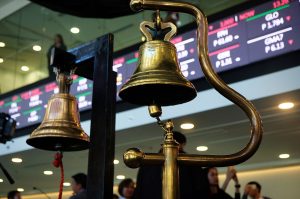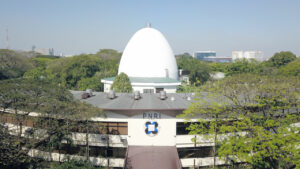Private sector key to climate action in the PHL

BENEATH the palpable vibrancy of the Philippines, an island country, lies a fragile reality — climate change. Rising temperatures and climate shocks could seriously impact the nation’s ability to meet its development goals, highlighting the urgency of a climate action roadmap while posing a vital question: how can the Philippines best tackle the impacts of climate change?
The private sector will be key, reveals the new Philippines Country Climate and Development Report (CCDR), produced jointly by the World Bank and the International Finance Corp. (IFC). The report helps identify opportunities for climate action in the country, supporting low-carbon development, while recommending priority and impactful actions to protect its people, businesses, and the economy.
Given that the Philippines aims to become a high-income economy by 2040, this is crucial. Without action, climate change will impose significant economic and human costs, impacting the poorest the most. As the nation tops this year’s World Risk Index, extreme weather events in the Philippines such as floods and typhoons frequently leave behind damages and destruction worth millions of dollars — at times billions. In addition, slow-onset trends of rising temperature, changing rainfall patterns, and rising sea levels, are equally threatening, which brings adaptation to the top of the climate agenda.
Adaptation cannot eliminate the costs of climate change, but it can substantially reduce them. This is key. The CCDR estimates show that the economic damages in the Philippines could reach up to 7.6% of gross domestic product (GDP) by 2030 and 13.6% of GDP by 2040. All sectors are likely to be affected, with capital-intensive sectors expected to suffer most from extreme events, and agriculture suffering the most from slow-onset trends.
In response, the CCDR underlines that smart policies can remove obstacles, enabling the private sector to take climate action, which requires large-scale investments. Public resources alone cannot meet those funding needs, especially with constrained fiscal space due to the coronavirus disease 2019 (COVID-19) pandemic. The private sector will therefore have to play a bigger role in meeting the growing demand for climate action.
As the country’s main growth engine — creating jobs and driving the economy — the private sector’s key task at hand is to turn climate risk and associated potential costs into a viable business opportunity, in both adaptation and mitigation. The challenge is to do it in such a way that the potential benefits outweigh the potential costs.
As a leading financier of climate investments globally, we see climate action as a tremendous investment opportunity — it can be beneficial to all stakeholders involved along with positive outcomes for climate in both short- and longer-term. In alignment, the CCDR outlines key areas for collaboration with the private sector, specifically renewable energy, green buildings, and sustainable finance.
ROAD AHEADThough the Philippines is a relatively low emitter of greenhouse gases, emissions are expected to rise from 234 MtCO2e (Metric tons of carbon dioxide equivalent) in 2020 to 399 MtCO2e in 2030. The energy sector accounts for 54% of total emissions, while agriculture is the second largest source, accounting for a quarter of emissions.
So, shifting toward renewable energy will be key for the Philippines. Accelerated decarbonization would reduce electricity costs by about 20% below current levels, which is good for the country’s competitiveness and would also dramatically reduce air pollution.
Recently, we’ve been working with a leading integrated energy company in the country to assess the viability of renewable energy as a source of base load power in the Philippines. We are exploring a mix of technologies that can potentially displace fossil fuel-based power sources and reduce CO2 emissions in the Philippines. That can be a game changer.
Another key area in decarbonization, the CCDR highlights, is green buildings, which can cut emissions and ultimately reduce power bills for people. The Philippines has already made considerable progress in that area. IFC developed the EDGE (Excellence in Design for Greater Efficiencies) green building certification system— and it has already certified more than 875,000 square meters (sq.m.) of space in the Philippines, preventing 23,000 tons of CO2 annually and unlocking opportunities for key industry players.
While EDGE is critical to mitigate climate change, resilience of buildings should be the underlying factor for climate change adaptation. That is why developers are using the Building Resilience Index — launched in 2021 — to assess applicable hazards based on location, exploring ways to improve resilience of buildings, and disclosing the resilience level to improve transparency. More than 10 real estate developers in the Philippines are now using this tool across 1.8 million sq.m. of floor space.
Finally, the CCDR recommends working with local financial institutions and regulators to ramp up climate finance. Creating markets for climate business through innovative financial products should be a continued priority, including green and blue bonds, as well as adoption of best international standards. While strong capital markets are key to spurring further financing for green projects, protecting the coastal blue economy is critical. This is because solid waste management and marine plastics are a threat to elements of the blue economy as well as urban public health.
While achieving climate goals and ensuring a greener economy requires significant financial resources, it is not just about the money. It is also about leveraging the expertise and technologies of the private sector. Attracting foreign investors is therefore essential. Much of the technology needed to combat climate change exists in foreign markets and foreign investments can additionally bring best practices required to adapt these new technologies to the Philippine market.
Likewise, public-private partnerships (PPPs) — when properly structured — can offer an efficient and viable way to channel scarce resources available for climate action, while ensuring a fair distribution of risks and rewards among stakeholders. We welcome the government’s push in this area. As the CCDR highlights, the Philippines has a wealth of experience and a strong track record of PPPs that can be applied in the climate space.
Moving forward, as we increasingly understand that countries need to work together for a low-carbon world, we are optimistic the CCDR will help inform the nation’s dynamic climate-action agenda, helping the Philippines do its part for a resilient future.
Kim-See Lim is the regional director for East Asia and the Pacific and JEAN-MARC ARBOGAST is the country manager for the Philippines at the International Finance Corp. (IFC). IFC is a member of the World Bank Group, and the largest global development institution focused on the private sector in emerging markets.




